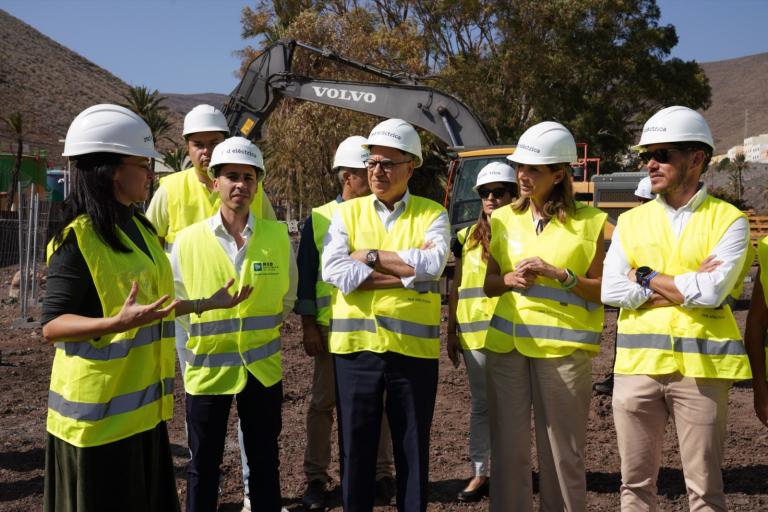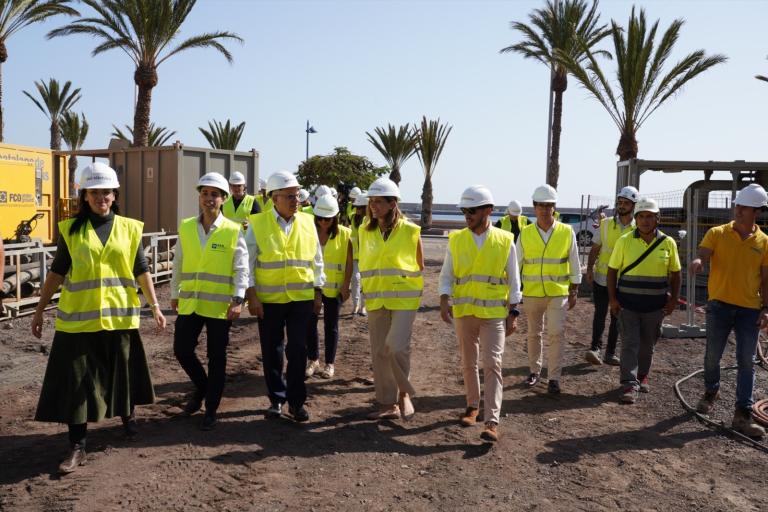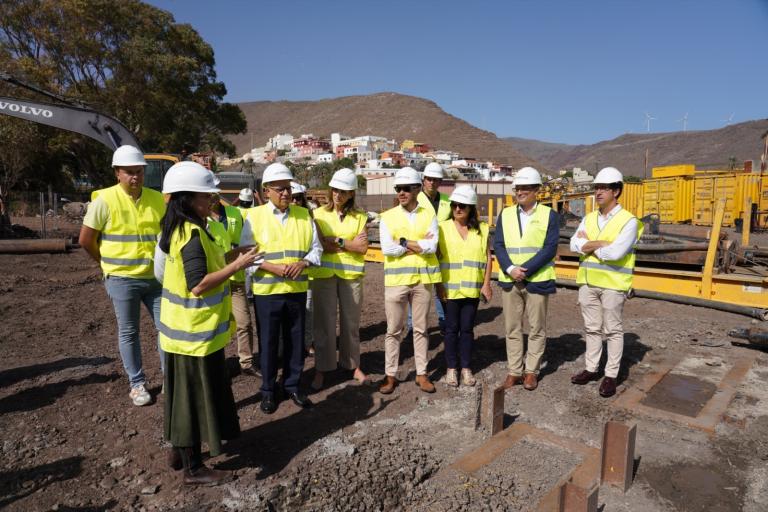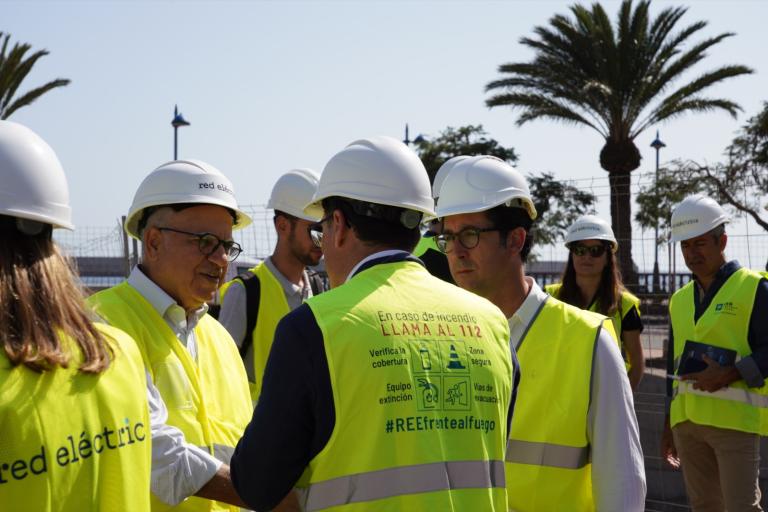The new Tenerife-La Gomera electricity link will mark a turning point in terms of the safety, quality and decarbonisation of the electricity system of both islands. This milestone will materialize as a sustainable infrastructure, on which Red Eléctrica is advancing with determination in order to put it at the service of society as soon as possible.
Red Eléctrica is making good progress in the construction works of the Tenerife – La Gomera submarine interconnection, initiated at the end of March, as verified this autumn by institutional representatives of the Canary Islands following several visits to the construction site.
The civil work on the underground line is nearing completion in La Gomera, and in Tenerife it is expected to be finished by mid-2024. The construction of the two substations (El Palmar in La Gomera and Chío in Tenerife) is also on schedule, and the drillings that will be used to connect the submarine cable with the land lines have been completed.
The new interconnection will link the electricity systems of Tenerife and La Gomera, increasing their size and improving the security, reliability and guarantee of supply.
This project, promoted by Red Eléctrica and included in the Network Development Plan 2021-2026, will contribute decisively towards transforming the electricity system of the Canary Islands into a more efficient and sustainable system by means of the integration of renewables and the reduction of overall generation costs.
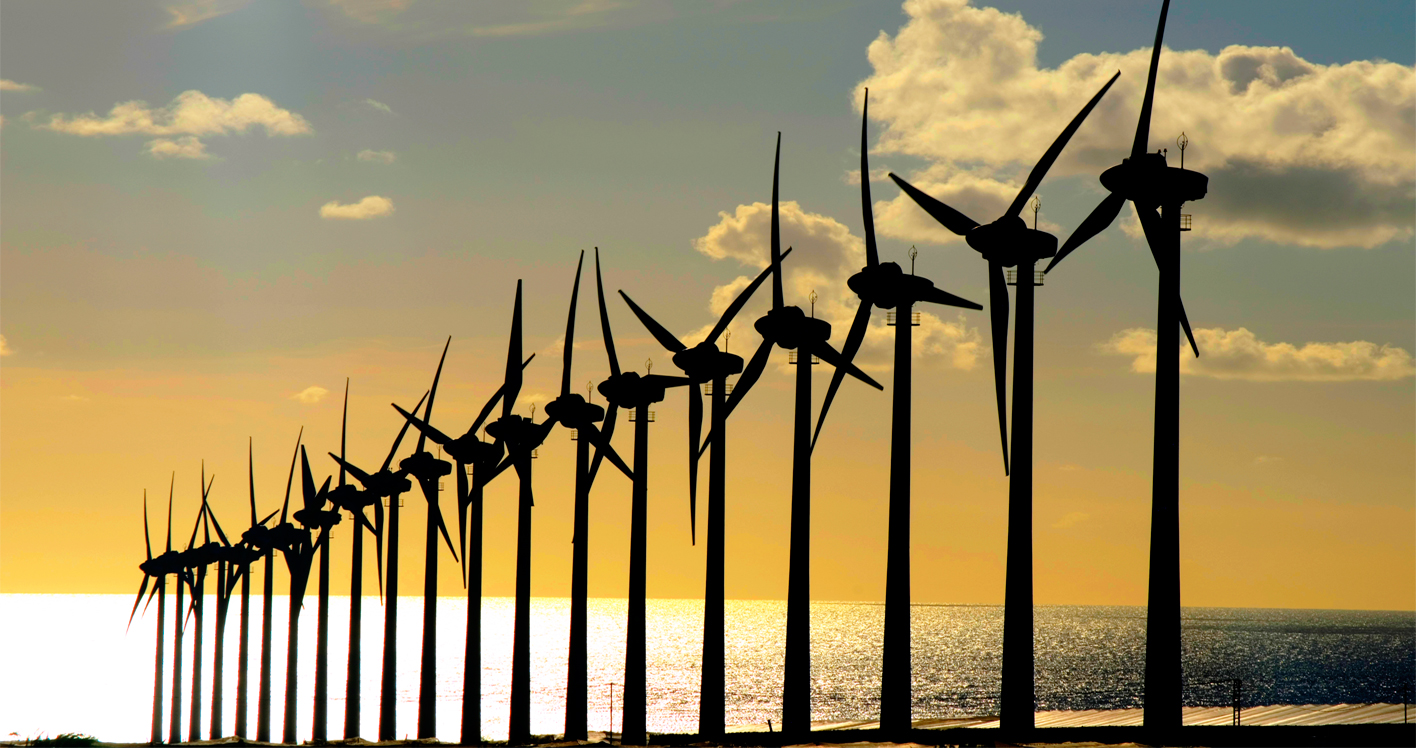
Thanks to this new link, La Gomera will be able to generate and integrate a renewable quota higher than the total demand of the island, reducing dependence on the El Palmar Thermal Power Plant and improving the quality of supply on the island.
On the other hand, the Tenerife system will be able to integrate the surplus renewable generation of La Gomera, reducing its dependence on fossil fuels and contributing to the reduction of greenhouse gas emissions.
Consequently, the project represents an important step forward in the process of ecological transition in the Canary Islands, which aims to fully decarbonise its economy by 2040, ten years ahead of the targets set by Europe.
The project: innovation for a record-breaking, low-impact challenge
The axis consists of a 66 kV double-circuit line, with a 36 km underwater section and two underground sections at both ends, which will connect the future electricity substation at Chío (Tenerife) with the new electricity substation at El Palmar de La Gomera (La Gomera).
This is the deepest alternating current submarine link in the world, a feat that has required a specially designed cable, adapted and reinforced with lightweight materials capable of withstanding the demanding mechanical requirements of the environment in which it will be installed, as well as a highly specialised installation process, which be carried out at a depth of 1,145 metres.
Furthermore, due to their length and technical complexity, landing of the cable on both islands has posed a technological and environmental challenge, that of ensuring the protection of the biodiversity of the waters, which is specially determined by the unique nature of its volcanic soils, which are very heterogeneous. In order to surmount this challenge, the directional drilling technique has been used, which consists of passing the underwater cable through a micro-tunnel that leads it hundreds of metres from the coast, thereby avoiding any impact on the biological populations of the coastal section being drilled.
The ground layout of the interconnection has been designed with a view to minimising the impact on the landscape and ensuring maximum protection of the vegetation and fauna in the different areas along the route, using technical solutions that respect the environment.
This infrastructure, therefore, demonstrates the firm and determined commitment of the Canary Islands to become a benchmark in the ecological transition of Spain, advancing the energy independence of the islands and consolidating the security and quality of the supply.
A new project that, together with Salto de Chira and the link between Lanzarote and Fuerteventura, once again confirms the commitment of Red Eléctrica to the economic and social progress of the Canary Islands.
